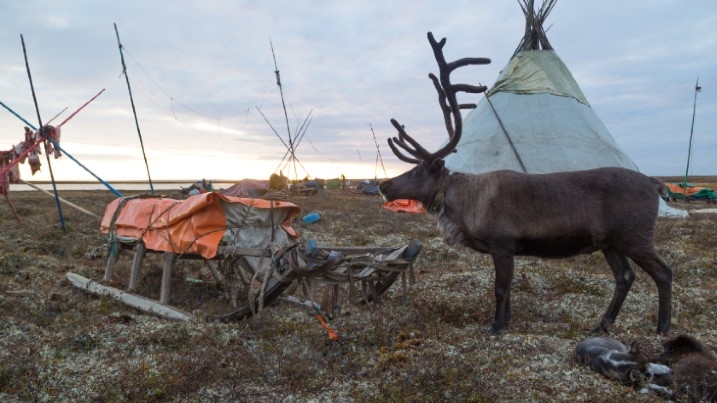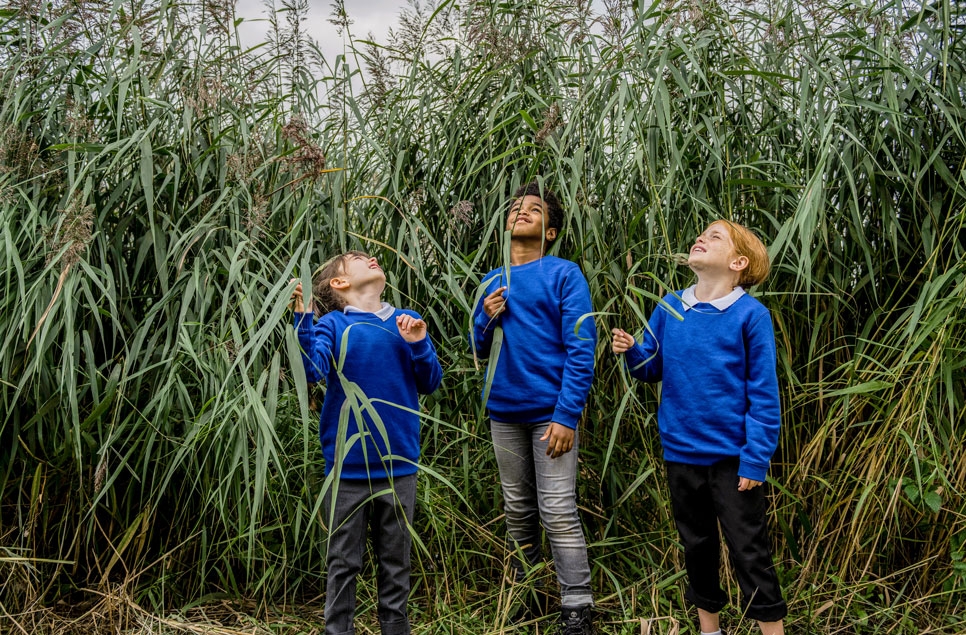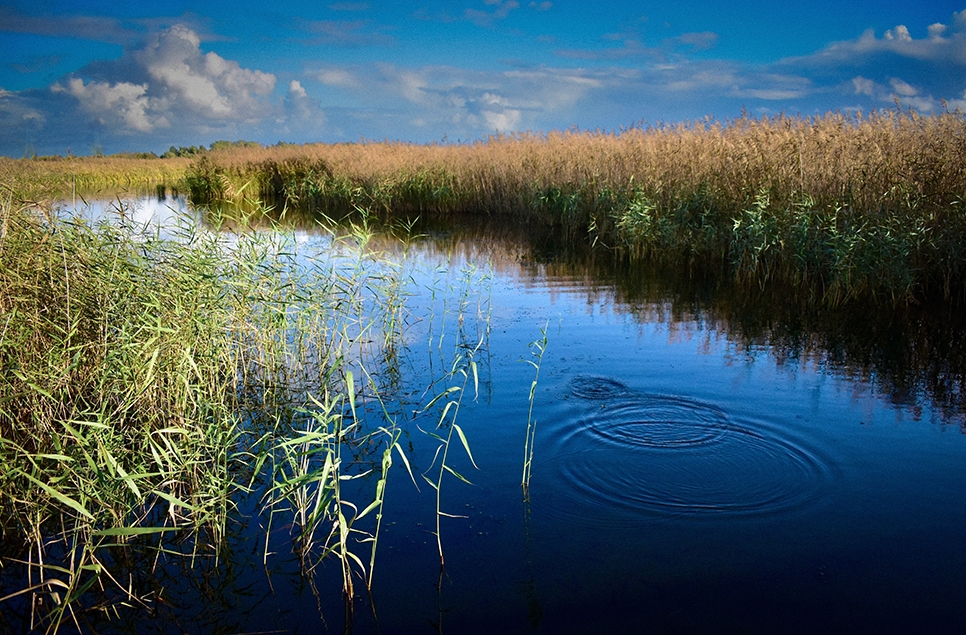Wetlands of the world: The Arctic tundra, Russia
This new series takes a look at some of the more unexplored yet fascinating wetlands on Earth. Our first stop is the Arctic tundra, home of the Bewick swan and an ancient people who are helping to protect it.
On the northern edge of Russia lies one of the most unusual landscapes in the world. The Arctic tundra is one of the harshest and most extreme places on the planet. By winter it’s battered by vicious storms, encased in darkness and ice. The sun barely rises and temperatures can dip to minus 40 degrees.
Secrets revealed
But spring brings the sun and with light comes an explosion of life. For a few short months the tundra is transformed into one of the richest habitats on earth and as the ice melts, its hidden secrets are revealed. The hummocky treeless terrain becomes carpeted with colour. The yellows and greens of mosses and lichens mingle with the purples of the heathers and berries, as the hardy Arctic flora thrives on the round the clock sunlight.

As temperatures rise, this once silent, seemingly barren place fills with the sound of water as it moves through the vast maze of lakes, marshes, pools and streams that criss-cross this wilderness. Waterways once frozen solid in winter now flow through this network of wetlands, feeding into the vast river deltas.
Nature’s bounty
And it’s these wetlands, brimming with vegetation and aquatic insects that provide the protein that’ll be enough to sustain the millions of waterbirds who fly thousands of miles to breed and rear their young here every summer. The area is so important that six of the world’s nine migratory flyways converge here.
By the end of the breeding season, the Russian Arctic tundra is thought to hold a staggering eighty to ninety million individual wildfowl, including Bewick’s swans, greater white-fronted geese and long-tailed ducks. Add to this a wealth of other breeding Arctic birds, from grey plover to snowy owls that visit during the summer, as well as mammals like the Arctic fox, musk ox and bears and it’s easy to see why the tundra’s wetland habitats are so valuable for wildlife.

A nomadic life
The indigenous Nenets people who inhabit this sparsely populated region traditionally move with the seasons too, their lives deeply entwined with nature.

These reindeer herders are one of the world’s last remaining traditional cultures. Every year many trek 400 miles with their animals to summer pastures in the most northerly tip of the Yamal (meaning edge of the world) Peninsula, drifting back southwards in winter.
Vladislav Viucheiskiy is one of several thousand herders that live in the Nenets Autonomous Okrug, along with 255,000 reindeer.

As head of the Reindeer Herders Union of the Nenets Autonomous Okrug, he knows that being attuned to nature in this way is intrinsically linked to his people’s survival.
Throughout the ages, the indigenous people of the arctic north have believed that caring for the environment is fundamental to survival. By observing and imitating the habits and behaviour of the arctic and its wildlife, we have learnt how to survive and endure the harsh conditions we live in.
The tundra’s crucial role
But the true value of the tundra lies far beyond the incredible levels of wildlife it sustains during the summer months and its ability to sustain indigenous livelihoods.
The high latitudes of the Arctic tundra contain nearly half of the global soil carbon and as such play a vital role in helping to regulate the planet’s climate.
Paradise lost
But all is not well in this wetland paradise of bogs, marshes, pools and streams. Scientists warn that climate change with its summer droughts and winter rains is affecting this region, bringing warmer, wetter weather. This in turn is thawing the carbon-rich permafrost soil at such a rate that the arctic is being turned from a carbon sink into a carbon emitter.
The Nenets may be extremely resilient and adaptable, but for them and their reindeer, these changes represent real challenges to their traditional way of life. Earlier spring melts compounded by delayed autumn freeze, affect the ability of reindeer and herders to traverse the frozen tundra. There are concerns that the changing climate could also threaten the composition of the vegetation that their reindeer rely on. The thawing permafrost also increases the risk of pollution, as oil spills are more likely when the permafrost that the pipelines sit on melts and becomes unstable, as has happened recently in the Russian Arctic.
Climate change is affecting the wildlife here too, potentially increasing the number of predators for ground-nesting birds. The warmer weather is also pushing some species to find breeding grounds further north, placing increased pressure on others like the endangered Bewick’s swan which already inhabit the very northern edges of the Arctic tundra.
But this isn’t the only challenge facing the Bewick’s swan. There are fears illegal hunting could be threatening their very survival, as WWT’s swan expert Julia Newth explains:
Nearly a third of all the Bewick’s we monitor arrive at our UK centres with shotgun pellets in their bodies. Although the swans are legally protected across their flyway, illegal shooting is one of the biggest dangers facing Bewick’s along their migratory route.

Seeking expert help
And with their numbers having plummeted by a third in recent years, Julia knows the race is on to halt their decline. One of the biggest challenges facing her is how to change people’s behavior, so it’s no longer socially acceptable to hunt the birds. Her research shows that the drivers for hunting are complex, often interlinked and require imaginative human solutions. So to find out what’s happening she’s turning to the local Nenets people, like Vladislav, and others in the Arctic, for help in understanding why this illegal hunting is taking place.
The local people, the hunters, may be the problem, but they’re also the solution. Different people manage land differently and indigenous communities traditionally co-exist with nature rather than dominate it. I think we have a lot to learn from these communities. I need to listen to what they’re telling us and be sensitive to cultural differences. Traditional knowledge, as it’s now called, is much more recognisable now as valuable information that should be listened to.

With support from WWT, Vladislav and other passionate individuals like him have formed an Arctic community of Swan Champions, working together to protect endangered birds like the Bewick’s swan from illegal hunting. For Vladislav, it’s not just about saving one bird. It’s about honouring the swan and what it represents in his culture, by acting as a guardian, living in balance with nature and protecting the fragile environment they both share.
The swan’s beauty and grace has been a source of wonder and the stuff of legends. It is a symbol of devotion to one’s children, family and land; an example of the tenacity and courage when protecting one’s offspring from predators. So the swan has earned the respect and veneration of all the people’s of the north.
The Swan Champion initiative involves the delivery of printed leaflets and the launch of a mobile phone app that’ll help hunters access information about birds and the law and engage in conservation, as Julia explains:
The Swan Champions aim to increase knowledge of Bewick’s swans, their wetland habitats and protected status among hunters, hunting tourists, local communities and young people.
Julia has also been working with Russian colleagues like Marina Samoilova, from the Nenets Federal Nature Reserve, to create a touring swan exhibition that can visit Arctic communities to celebrate the swans, cement their role in local culture and art and highlight the birds’ plight. But accessing these remote wetlands is no easy task, as Marina describes.
For two weeks we roamed the Nenets Autonomous Region – one of the key areas where the Bewick’s breed - braving snowstorms, high winds and travelling ‘off road’ across more than 1,200 km across this snowy wetland wilderness.
The Tundra’s future guardians
During the tour, Marina visited four communities and their schools, where she held talks, workshops and masterclasses. It was a trip that was to leave a huge impression on her, as the young people shared stories of their lives on the tundra and the wildlife that lives there and quizzed her about her conservation work.
When we spoke to the children, it became clear that although they know little about the officially protected reserves, in terms of their knowledge of local nature, they are without rival. And it’s not surprising as most of these children spend their whole summer on the tundra and know its inhabitants first hand.

Valuing indigenous knowledge
And Marina’s recognition of this indigenous knowledge and the role it can play alongside more traditional conservation methods is something that’s being mirrored around the world.
Recent research demonstrates that while the world’s 370 million indigenous peoples make up less than five percent of the total human population, they manage or hold tenure over 25% of the world’s land surface and support about 80% of the global biodiversity.
As concern grows over the imperiled state of our planet, and calls to take action over the climate emergency and escalating biodiversity loss intensify, we increasingly value the knowledge held by indigenous peoples like Vladislav and the Nenets reindeer herders and our other Swan Champions. It’s proving vital in our work to protect the Bewick’s swan and the wider biodiversity in the Arctic tundra. So perhaps it’s fitting that the final words should go to Vladislav:
We have never tried to conquer or dominate the Arctic environment. Instead we have tried to adorn it with our presence.
Champions for the Arctic
Linking up people from all along the flyway, WWT are coordinating an extraordinary group to act as guardians for the Bewick swan and other struggling arctic species.
Find out more


